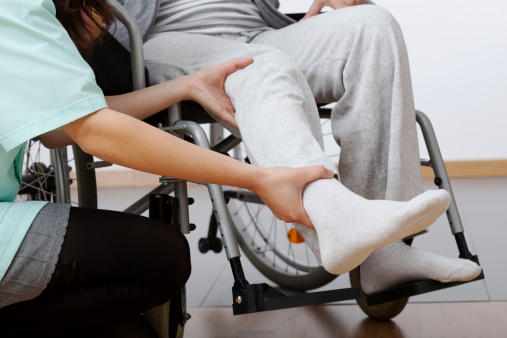Rehabilitation following a Road Traffic Accident
A road traffic accident can happen to anyone of us at any time and when it does the consequences can often, but not always be devastating, not just because of injuries sustained but also because of the after-effects; on daily life as well as on physical and psychological health.
But owing to the way that vehicles are designed, and driving habits are uniformly practised, any injuries are generally similar; and people injured in car accidents will sustain a different type of injury to those involved in motorcycle crashes.
Common injuries
By far the most common car crash injury is whiplash. This is when a sudden jolt is received which can cause damage to tendons, ligaments and muscles in the neck and shoulder. The severity of this can vary from a mild pain and stiffness to an inability to move the head and neck properly so the treatment for this would vary from ice packs and painkillers to physiotherapy, where the person would be given advice on such things as posture and self-help exercises for long-term use; in some cases treatment is needed for up to six months.
In a head-on collision a common cause of injury can come from the seatbelt restraints where severe bruising or even fracture to the sternum can occur. If the front section of the vehicle is substantially pushed forward this, coupled with the continuing forward motion of the driver can cause fractures to the lower legs and pelvis, and potentially internal injuries if the steering wheel impacts the torso. In a side impact the head can collide with the window or side pillar of the vehicle and this has been shown to cause head injuries ranging in severity from mild concussion to traumatic brain damage.
Broken bones
Most fractures are treated in a standard way by immobilising the affected limb in a plaster cast, with this usually lasting for six weeks. Sometimes with a more complex fracture a metal frame (usually an Ilizarov type frame) may be attached during surgery to enable the bone to knit and strengthen. In the worst cases the frame can be on for many months and the person affected may be unable to weight-bear for a time and will certainly require the use of crutches, as well as assistance with everyday tasks like washing and dressing. It’s probably true that motorcyclists are most often affected in this way as, apart from head injuries, the injuries they are most likely to sustain are limb fractures.
Psychological issues
What cannot be underestimated is the psychological impact which a road traffic accident can have on victims and this can be difficult to measure in terms of the time it takes to recover. The effects can range from a short-term fear of driving or just being in a car, to post-traumatic stress disorder. The associated anxiety and depression can sometimes last for many years. In most cases however, treatment can usually be given in the form of cognitive behavioural therapy over a period of weeks or months, enabling the person to get back some degree, or all, of their normal function.

